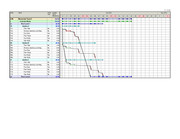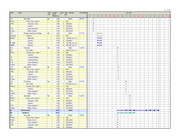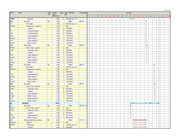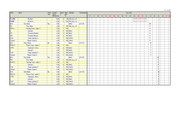Corporate project management system usually includes the databases (reference-books) of the corporate standards and templates.
These templates usually include the library of typical fragments that are small projects describing creation of typical project elements.
In construction projects these elements may include building the wall, column, floor, 1km of the pipeline (separate for different soil categories), etc.
Using these fragments in real projects may require some volume and resource adjustments but the set of fragment activities and their dependencies are usually the same.
The same fragments may be used many times in the same project (in construction of high-rise buildings, pipelines, bridges, roads, etc.) and any new project may require to create new fragments and include them in the library for future use.
We find the usage of typical fragment library very helpful and many companies that use Spider Project create and use such libraries.
Other tools useful for creating reliable schedules are reference-books.
They may include resource dictionaries, unit costs for different types of activities, material requirements per volume unit of different types of activities, resource productivity on different types of assignments, resource crews required on different activity types, etc.
If such reference-books are created it is sufficient to enter activity and resource types and get all data required for schedule creation from the reference-books of the corporate norms. Changing norms in the reference-books can automatically change corresponding information in all project models based on these reference-books.
Reference-books are also widely used by Spider Project customers.
Creating corporate reference-books, WBS templates and fragment library is the first major step for creating corporate project management system.
Your thoughts?












Replies